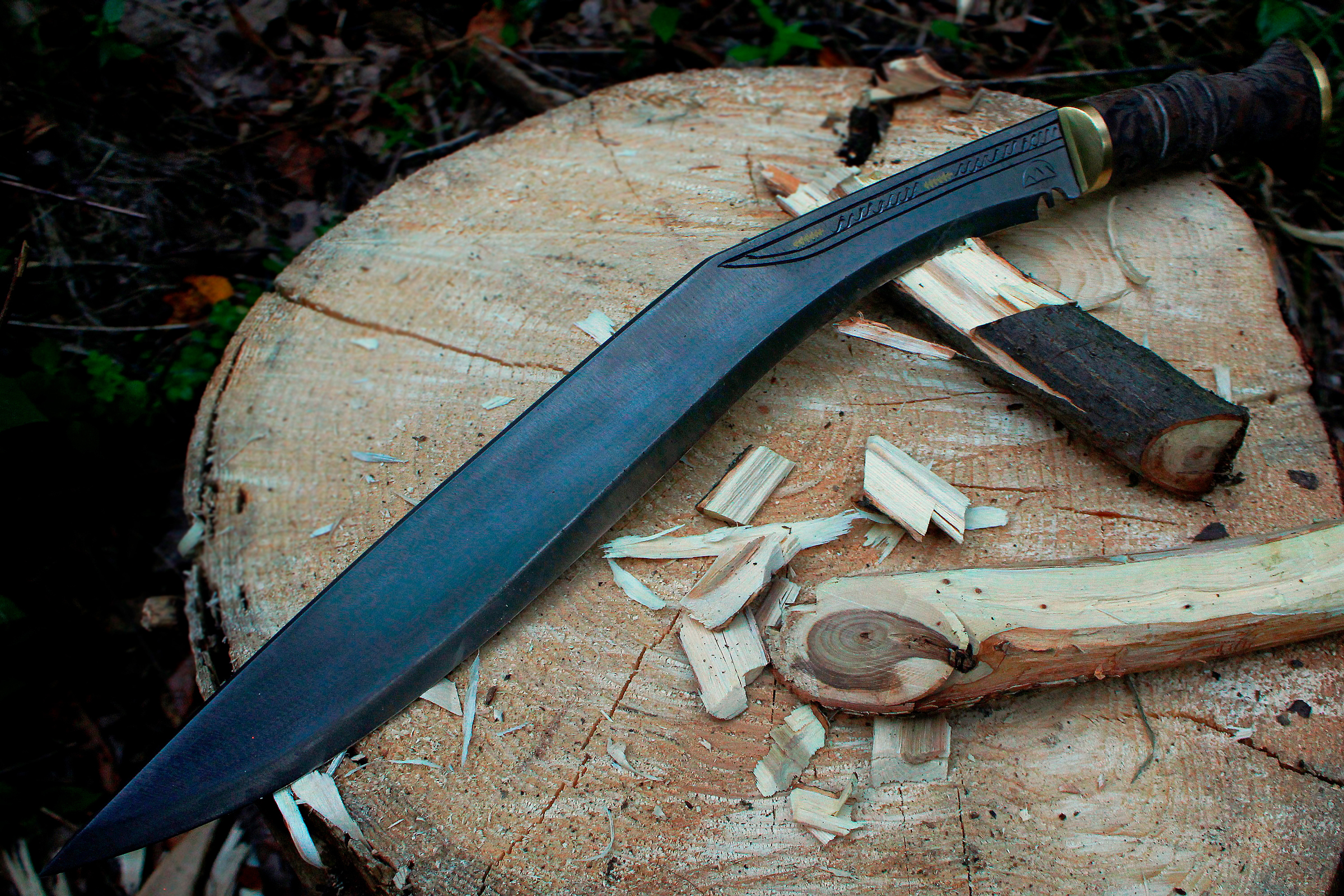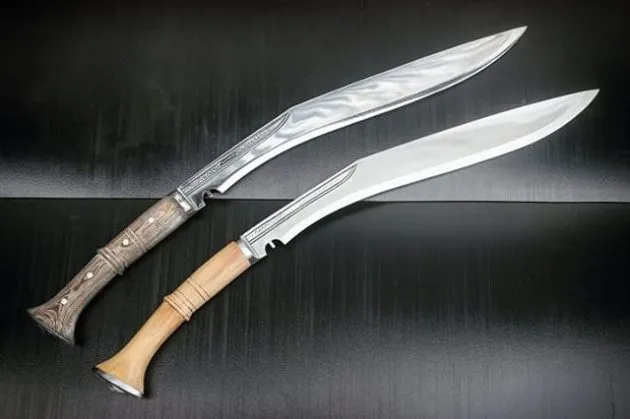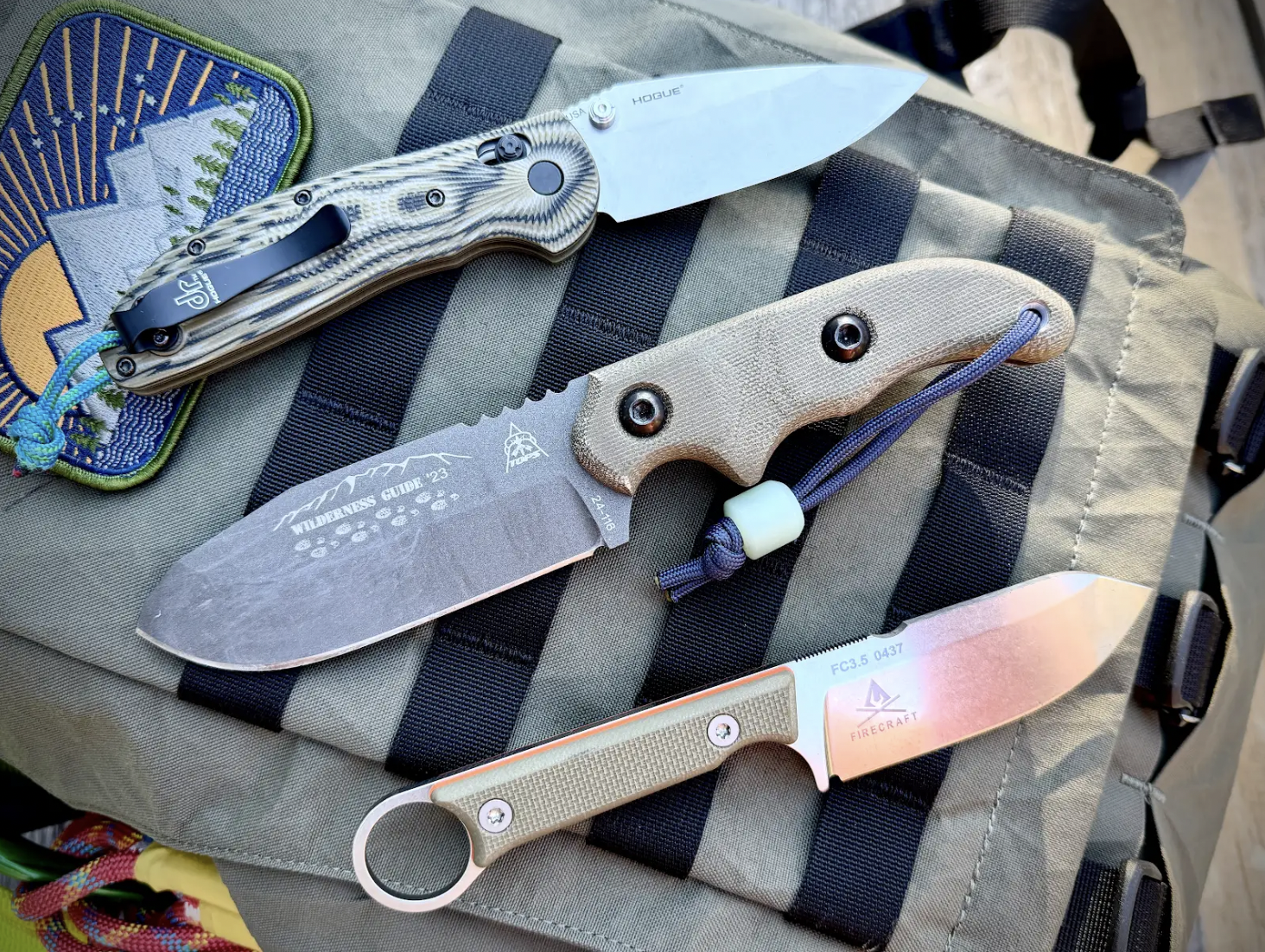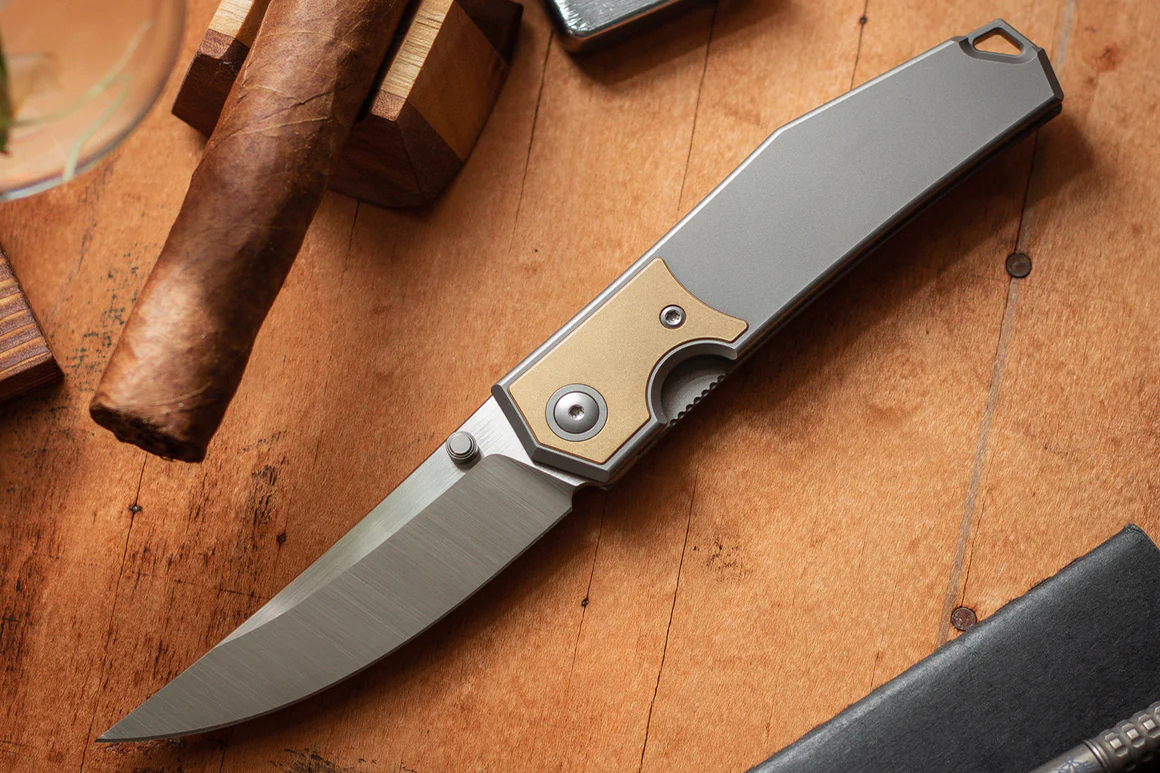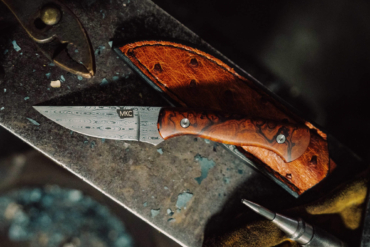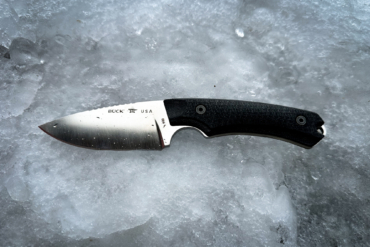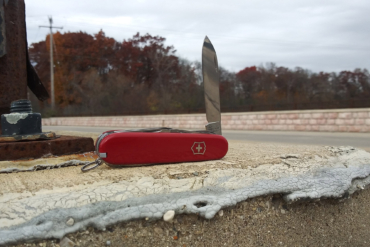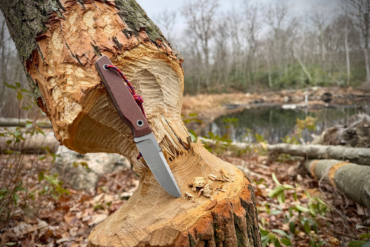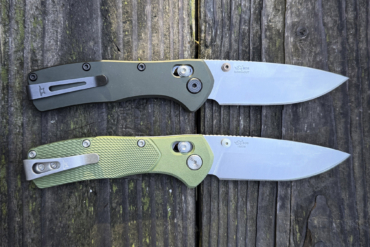I still remember the first time I saw a khukuri. Two, in fact, since Milla Jovovich was dual-wielding them to cut down a zombie horde in Resident Evil: Extinction. I decided then that I must have one … a khukuri.
In the U.S., khukuris still carry a zombie prepper image. No shortage of outdoor stores have blacked-coated, forward-curved khukuri-like objects that copy the iconic shape onto paper-thin blade stock. Granted, there’s a place for cool-looking, cheapo beater machetes. But these khukuri lookalikes are far from the real thing.
Khukuris are heavy-duty, versatile choppers — the love child of hatchets and machetes. They don’t need to be from Nepal to be authentic, but a Nepali khukuri house is the preferred option for a blade rich in heritage and forged with experience and pride. Among them all, Kailash Blades is setting the standard for marrying modern techniques with tradition and a range of comparatively budget-friendly custom options.
In short: Khukuri-like objects are a dime a dozen, but the real thing is likely more versatile than you may know. So, we’re breaking down why you might want your next bushwacker to be a khukuri — and reviewing a beastly, versatile chopper from a khukuri house that’s pushing boundaries in performance, price, options, and workers’ treatment. Here’s our take on the Sirupate, a Kailash blade custom order option with a crazy good quality and price.
- Blade style: Sirupate khukuri
- Blade lengths: 12-24"
- Blade length: 16"
- Blade thickness: 6.5 mm
- Steel: 5160 carbon steel
- Weight: 1.3 lbs. (knife only)
- Handle material: Micarta wrap
- Price: $163-333
Pros
- Heavy and strong
- Tons of custom options
- A workhorse of a blade
- Traditional khukuri style, but with a lower learning curve
- Great price point for standard up to full custom options
Cons
- Shorter handle grip, double-check sizes
Kailash Blade Review
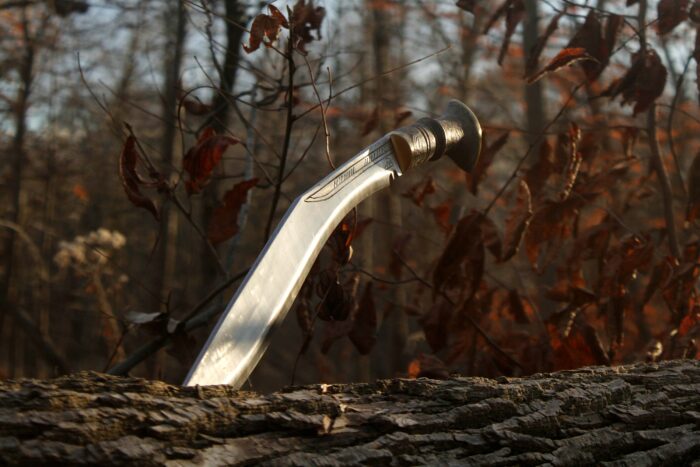
Most blades get treatment in two stages: hardening and tempering. A blade gets brought up to temperature and quenched in oil. The result is a blade hard enough to shatter if dropped. So, it gets tempered — baked low and slow, back down to a usable toughness.
The vast majority of blades are quenched in oil. Water cools steel so quickly it can warp and crack, which is why only a few, thick blades are water-quenched. Katanas’ iconic curvature comes from exactly that warping.
Khukuris, meanwhile, avoid unexpected bends by being quenched in water poured slowly from a kettle. It’s cheap. It’s traditional. But it takes the hand of a practiced kami, or Nepali blacksmith, to perfectly harden the edge while keeping the spine tough. With this method, consistency is difficult.
Hence why Kailash Blades hardens all its khukuri with oil. The company uses the same 5160 leaf spring steel as many other khukuri houses. However, they continually work to improve their heat treatment process — to the point that founder Andrew Lucas has even consulted Larrin Thomas, one of the world’s foremost experts on knife metallurgy, on ways to further improve the performance of their chosen steel.
They offer a far greater range of options for customizing both their traditional and more modern designs than any other khukuri house in the game.
Slicing Style
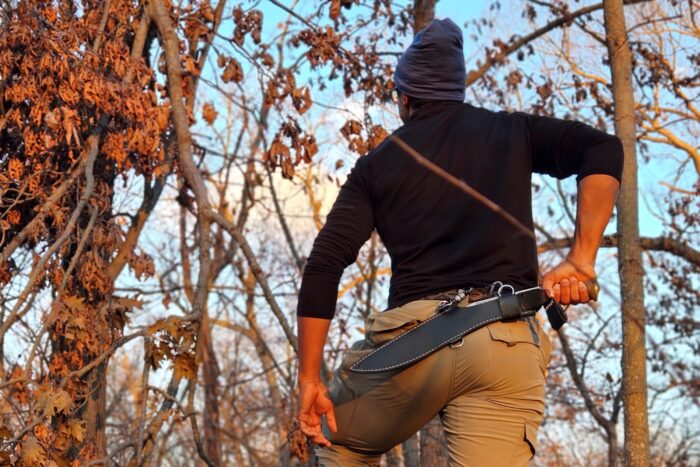
Of the many styles of khukuris, few blur that machete/hatchet line as much as a Sirupate. And few Sirupates I’ve handled balance bushwacking spindly twigs and clearing dried 3-inch-thick hardwood branches as well as Kailash’s.
All Sirupates trend long and lean, favoring mild curves over 10- to 20-inch blades. On the longer end, they can pick up the tip speed to wack lighter vegetation like a machete. Narrow and thick, they’re heftier behind the edge than many axes. What most Sirupates don’t have, are the sheer bevy of features that Kailash offers.
Kailash is the first khukuri house to offer Micarta handles for both full and rat-tailed tangs. I opted for the latter, figuring that a tapered tang wrapped in layers of Micarta would offer a grippy, weather-resistant, vibration-damping handle — useful for the testing I had in mind.
I had a few months to clear several fallen white oaks and maples from a number of trails. Given the option to pick a blade between 12 and 24 inches, I opted for a 16-incher — hefty enough for thick limbs and short enough to avoid tangling in downed branches.
Kailash is also one of the few khukuri houses that offers a choice between traditional, western leather, and Kydex sheaths. I opted for the latter two — leather for easy drawing and style, and Kydex for weatherproof durability.
Both offered attachments for carrying the blades at hip level, dangling below, securing with a thigh strap, or hanging horizontally from a belt behind the back. Lastly, brass bolsters for that most important of elements — pure, unadulterated drip.
The Learning Curve
As someone with a problem I can quit anytime, the Sirupate was far from my first khukuri — even from Kailash. I’ve had one of their shorter, lighter, curvier designs, the Pensioner, for several years. The Sirupate was another beast entirely.
Khukuris have a learning curve. The first instinct is to chop with the middle of the belly. Even after you find the sweet spot, the length and curve add some complications. More than once I’ve chopped into a download log, only for the forward curving tip to strike a rock in the ground.
Fortunately, with Kailash’s heat treatment, I’ve been hard-pressed to chip even their standard grinds accidentally overswung into stone. The Sirupate is no exception. However, the slighter forward curve of the blade makes it that much more intuitive for khukuri newbies.
That said, if you’re coming from a hardware store machete, cutting light vegetation with this much mass will take adjustment. The Sirupate has a machete’s tip speed, but with a blade two to three times thicker and 30-40% heavier.
Hefty Handling
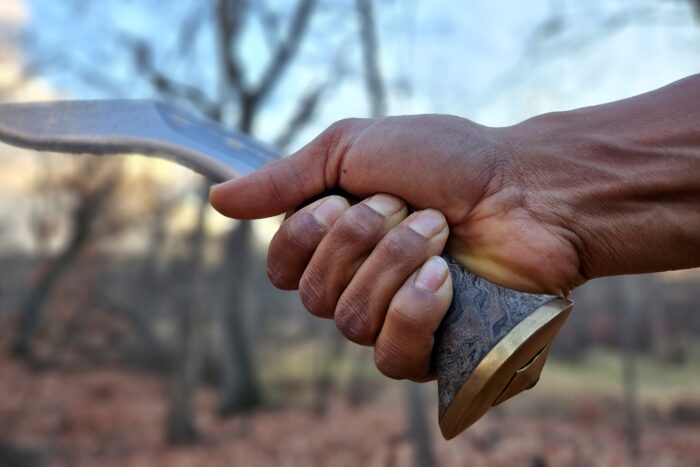
Where the Sirupate shined most was in severing 1-2-inch-thick hardwood branches in a single swing. It also chopped moderately dry 4-inch-thick pieces of oak faster than most hatchets. I did find myself rounding out the abrupt transition between the blade’s edge and flat with some sandpaper so it could chop that much deeper. Although, honestly, any wood north of 4 inches, especially if dry, calls for an axe or saw anyway.
Flea market knives give rat-tailed tangs a bad rap in the West. They don’t deserve it. Between the tapered tang and layers upon layers of wrapped Micarta, the handle absorbed vibration pretty well. Even so, for those particularly sensitive to vibration in the hand, the stacked leather handle option would likely have done better to soak up the impact.
The flared end of traditional handles locked my hand in nicely. However, even at 4.75 inches long, I found the flares to hit my palm. A pair of gloves solved this. However, for anyone buying their first khukuri, I’d recommend measuring your grip from the first knuckle of your index finger to the outside meat of your palm.
These Khukuris handles (and handles on some other Asian-made knives, too) run small. If you’re still unsure about the fit, upsize. Extra handle material just means that much more vibration absorption.
Whenever it came time to make a fire, I found that using the Sirupate as a draw knife left me with three to four times the wood shavings I could get from making feather sticks. The blade wasn’t as quick at splitting wood as a hatchet. Nevertheless, its quick transition from edge to 6.5mm spine made it wedgy enough to baton wood far quicker than most bushcraft-oriented blades I’ve used.
Khukuri Blade Care
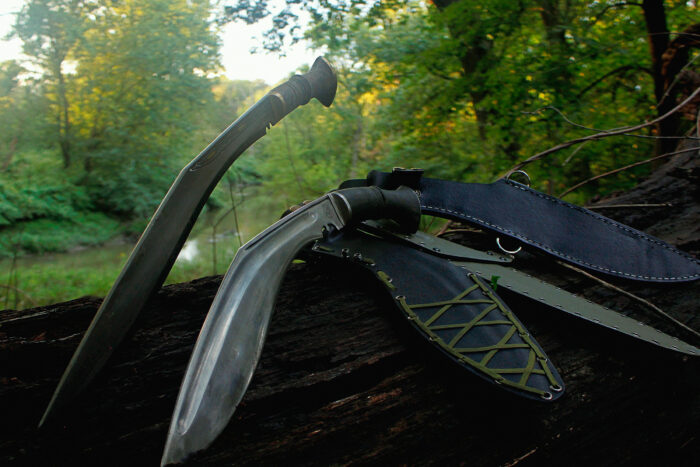
The 5160 steel is hard enough to hold an edge through a day of heavy chopping and tough enough to handle the occasional missed swing. Where it’s temperamental is with moisture. More than once I’ve set the steel aside in my tent after an evening cutting wet or snowy wood. Come morning, without fail, there were small rust spots.
Having to clean and oil the Sirupate after a day of heavy chopping is the tradeoff for quality chopping. Are there other steels with similar performance with better rust resistance? Yes. For the same price? No.
Quick hack: Waxy waterproofing leather conditioners like Sno-Seal will coat and protect the blade longer than straight oil anyway. If you plan on using it to crack coconuts or ninja-chop a pineapple, waxy food-safe cutting board butters make a good alternative.
Recurve blades have a reputation for being tough to sharpen. It doesn’t help with khukuris that most people just touch up their heavy choppers a few times a year with a file. Aim higher. Files are for realigning bent or chipped edges. The best option for sharpening khukuris is a belt sander like Worksharp’s Blade Grinding Attachment.
That said, all you really need to get a khukuri shaving sharp at home is a piece of sandpaper atop a mouse pad glued to a curved piece of 2×4. In the field, a strip of 400 grit will also do the job.
Custom Costs
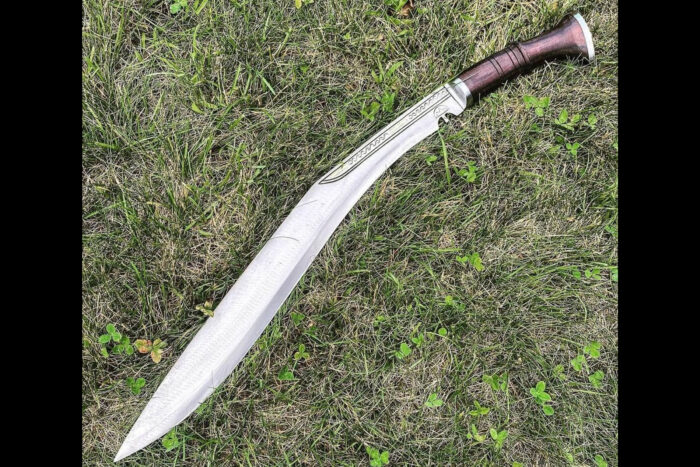
Custom blades forged by a skilled smith are worth every penny. However, few have the tens of thousands of pennies — or are far enough down the “knife guy” rabbit hole — for custom prices.
For most blades, Kailash allows buyers to choose the blade’s finish, length, handle size, grind thickness, tang, bolster hardware, handle materials, and sheath materials, standard. Even with two sheaths, and all the options I opted for, the khukuri I tested came out to $307. With the sheer breadth of khukuri styles and options Kailash offers, few people would ever have to commission a custom order to get a custom-feeling blade.
But say you wanted a Micarta wrap handle with a layered color scheme that would match the threading and spacer of a custom leather sheath — for a 4-inch skinner. It’s possible.
A number of Khukuri houses are an excellent option for custom, hand-forged blades that will handle hard work for years to come. However, only a few, such as Khukuri House and Kailash Blades offer full custom services for non-khukuri blades.
For me, Kailash leads the pack in the breadth of their custom options and experience. Testing what was possible, I pitched them on doing a custom carcass splitter: a nearly 2-foot cleaver on the end of an axe handle. Surprisingly, they’d made one before.
Kailash Sirupate: Conclusions
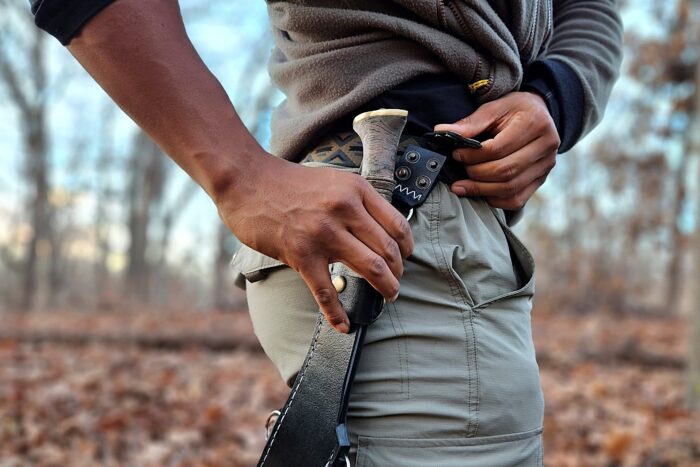
At $163, even a standard Siurpate is still a substantial purchase — and all orders come with 6-8-week lead times. Khukuris also come with a learning curve. They won’t bushwack spindly vegetation as cheaply and as well as a Latin machete. They won’t process wood as thick as an axe could.
Chopping on the ground can lead to the forward-curving tip occasionally finding a rock. Also, the smaller handles of many Central Asian blades add a bit of guesswork to selecting a handle size.
However, Khukuri houses are a great option for cost-effective, high-end workhorse blades. And among the many options, Kailash Blades currently claims the crown for the most modernized forging techniques, highest worker pay, and both the broadest array and most forthright information on all the options they offer — before you even get to full custom orders.
There are as many different styles of khukuris, or “kukris,” from lithe Chitlanges to squat Budhune, as there are talented khukuri houses. Kailash’s shorter, 13-inch blades like the Pensioner still strike the versatility sweet spot for the age-old “if I could only have one knife” question. Fortunately, I don’t only have to carry one.
The Kailash Sirupate is one of the best examples of the versatility and power a khukuri can offer. From de-limbing downed trees and clearing brush along a trail, to shaving and splitting wood for my camp stove — everything a trusty pocketknife can’t handle, a Sirupate can. It’s a beast of a chopper, with a milder learning curve than most khukuris, and a multitude of options to make it yours.
